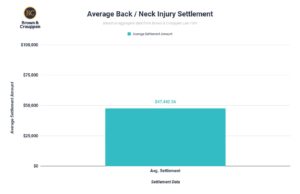What Is Pitocin?
Pitocin is a synthetic form of oxytocin, a naturally occurring hormone that promotes labor contractions. The body releases increasing oxytocin levels during the first and second stages of labor, followed by a leveling-off during the third stage.
A sufficient level of oxytocin is essential to the progression of labor. If natural labor does not progress or a medical emergency requires early delivery, the labor and delivery team may recommend intravenous Pitocin.
Like natural oxytocin, IV Pitocin causes the uterine muscles to contract. It can start or speed up stalled labor if the mother needs to deliver urgently, but it can be challenging to use safely.
Is Pitocin Safe?
Responsible use of Pitocin can speed up delivery, potentially saving the lives of the mother and baby. However, if the dose is incorrect or the team fails to respond to signs of danger, there can be serious consequences. Oxytocin regulates the rhythm of contractions during labor. Too much of the hormone may cause contractions that are too frequent or intense, a condition known as uterine tachysystole.
Tachysystole is one of the main dangers of Pitocin. Too much of the hormone may cause intense and frequent contractions that limit blood supply to the baby. Reduced blood means the baby will not receive enough oxygen. Overly intense contraction patterns are the most common cause of decreased oxygen supply during labor.
What Can Pitocin Do to Mothers and Infants?
Decreased oxygen supply is only one of the potential Pitocin risks for mother and baby. For the mother, intensifying contractions can cause potentially fatal complications, including:
- Dangerously high blood pressure
- Cardiac arrhythmia
- Bleeding inside the skull
- Uterine rupture
- Nausea and vomiting
- Water retention, potentially leading to water intoxication
Water intoxication occurs because oxytocin, either natural or synthetic, causes the body to reabsorb too much liquid. If the mother drinks water during delivery and receives IV Pitocin, water may build up dangerously in the body.
There is also a risk of Pitocin side effects for babies. If intensifying contractions interrupt blood flow to the uterus, the infant may experience:
- Neonatal jaundice
- Abnormal fetal heart rate
- Seizures
- Retinal hemorrhaging
Some of these complications may cause long-term side effects of Pitocin in a baby. For example, there is a risk of permanent brain injury due to insufficient oxygen during birth, a condition known as birth asphyxia. Children with birth asphyxia are at higher risk of developmental disorders, including cerebral palsy, visual or hearing loss, and intellectual disabilities. Fetal death is also possible.
In many cases, medical teams only notice the side effects of Pitocin after delivery. The team may have missed warning signs, such as unsafe contraction duration or fetal distress. By that time, there may already be a serious birth injury.
Pitocin vs. Oxytocin
If you or your child suffered due to misuse of Pitocin, you may be entitled to legal compensation. Big insurance companies and healthcare organizations may try to dismiss your concerns by claiming that oxytocin was naturally present during birth.
During labor, the hypothalamus releases oxytocin in a series of pulses. This release begins an internal feedback loop in which the hormone induces contractions, activating nerves that stop oxytocin release before it becomes too concentrated.
By contrast, Pitocin normally enters the body through an IV drip. The body can’t detect the presence of the hormone as easily when it is being delivered artificially through an IV. The Pitocin will continue to flow until someone manually adjusts it.
The FDA warns that overdosage is a serious risk and that all patients receiving Pitocin must be constantly monitored. If your medical team was negligent by not properly monitoring, you may qualify to file a birth injury lawsuit in Missouri.
Medical Malpractice and the Use of Pitocin
As a patient, you entrust your medical team to make safe and informed decisions. They are responsible for understanding Pitocin risks and using it only when medically advisable. According to the FDA, labor and delivery teams may use Pitocin for the following purposes:
- Inducing labor for urgent medical reasons.
- Correcting weak or irregular contractions.
- Emptying the uterus after spontaneous or incomplete abortion.
- Controlling postpartum bleeding by producing contractions.
However, even in these scenarios, there are some cases in which Pitocin risks may be too high, such as when:
- The baby is in distress and delivery is seriously delayed.
- Uterine contractions fail to move labor forward.
- The baby is in an unfavorable position.
- The mother’s anatomy would make vaginal delivery dangerous.
The FDA explicitly cautions against using Pitocin in emergencies when a cesarean section would be safer. Experts also do not recommend Pitocin after C-section delivery because abdominal surgery increases the risks of uterine rupture.
Further, the FDA has also issued a box warning against using Pitocin for elective induction. A box warning indicates the most severe possible consequences.
Tragic outcomes can occur when medical teams fail to follow FDA warnings and best practices. If you believe medically negligent Pitocin use injured you, your baby, or someone you love, you may qualify for legal compensation through a medical malpractice lawsuit.
Pitocin Birth Injuries: Your Legal Rights
If you believe Pitocin caused a birth injury, it’s essential to consult with an experienced lawyer as soon as possible. The Missouri medical malpractice statute of limitations normally requires you to file your lawsuit within two years of the injury. Consulting with an attorney is the best way to ensure you bring a strong case before the all-important filing deadline.
Pitocin Cases Won
A number of successful Pitocin birth injury cases have already made their way through the courts. For example, in 2014, a Missouri mother received increasing doses of Pitocin during labor. Her child suffered a hypoxic ischemic encephalopathy, which caused multiple interruptions to his oxygen supply during birth. The baby boy ultimately received a cerebral palsy diagnosis.
In 2021, after a protracted legal battle, the family received over $34 million in compensation. In addition to ensuring a measure of justice and accountability, the funds allowed them to prepare for their son’s lifelong care needs.
Another family filed a wrongful death lawsuit after losing their day-old daughter. The family stated that their medical providers inappropriately ordered Pitocin instead of recommending a C-section.
Expert Help With Your Pitocin Claim
If your baby suffered birth injuries due to a medically negligent Pitocin prescription, Brown & Crouppen is here to review your case and help you understand your legal rights and options. We are an award-winning personal injury law firm with a long-standing reputation for securing high-value verdicts and settlements for our clients.
Our legal team is committed to ensuring every client has the best representation possible. If you believe you have grounds to file a Pitocin birth injury lawsuit, call (800) 536-4357 or contact us online for your free consultation.
Related Reading
To learn more about birth injuries and your legal rights, refer to the following sources:
Sources
- Ahearne, C. E., Boylan, G. B., & Murray, D. M. (2016, February 8). Short and long term prognosis in perinatal asphyxia: An update. World journal of clinical pediatrics. https://www.ncbi.nlm.nih.gov/pmc/articles/PMC4737695/.
- BetterCare. (n.d.). Fetal stress during labor. The Fetal Heart Rate Handbook. https://bettercare.co.za/fetal-heart-rate-handbook/03.html.
- Delong, C. (2023, June 17). Box warning. StatPearls [Internet]. https://www.ncbi.nlm.nih.gov/books/NBK538521/.
- Prevost, M., Zelkowitz, P., Tulandi, T., Hayton, B., Feeley, N., Carter, C. S., Joseph, L., Pournajafi-Nazarloo, H., Yong Ping, E., Abenhaim, H., & Gold, I. (2014, January 27). Oxytocin in pregnancy and the postpartum: Relations to labor and its management. Frontiers in public health. https://www.ncbi.nlm.nih.gov/pmc/articles/PMC3902863/.
- U.S. Food and Drug Administration. (n.d.). Pitocin. Accessdata.FDA.gov. https://www.accessdata.fda.gov/drugsatfda_docs/label/2014/018261s031lbl.pdf.
- Uvnäs-Moberg, K. (2024). The physiology and pharmacology of oxytocin in labor and in the peripartum period. American Journal of Obstetrics and Gynecology, 230(3). https://doi.org/10.1016/j.ajog.2023.04.011.






